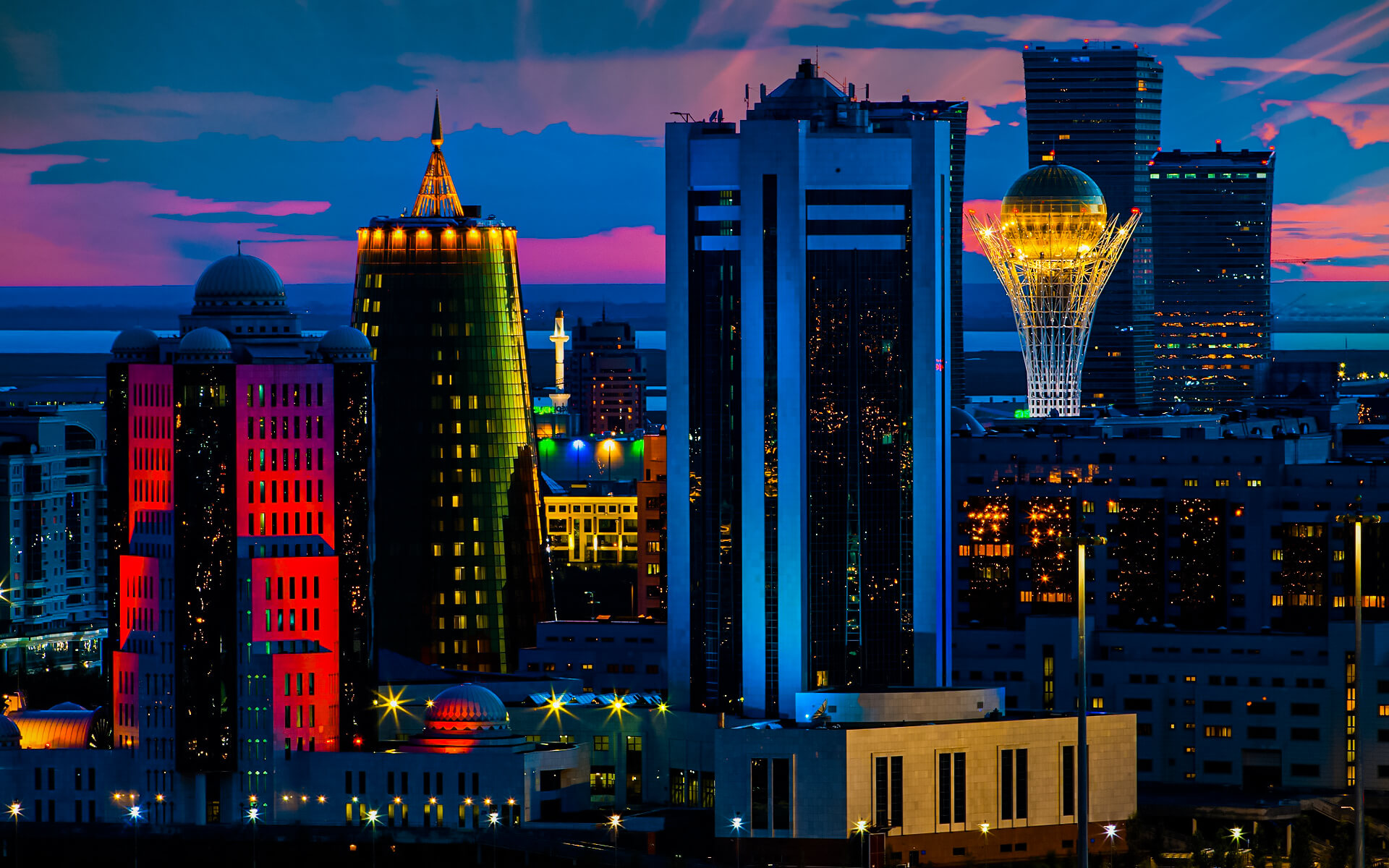Bayterek Tower (Бәйтерек, Bäyterek). In the newborn city, an example of futuristic architecture. This 97m high skyscraper, nicknamed Chupa Chups by locals owing to its resemblance to a gigantic lollipop, provides a fantastic perspective of the city as well as an art gallery, an aquarium, and a restaurant. The ever-humbly President Nazarbayev has produced a golden palm print in the center of the top sphere, where visitors may place their own hands. Be aware that at peak hours, the line for the palm might be very lengthy.
Khan Shatyr. Is a massive translucent tent that can house 10,000 people. The 150m-high tent has a 200m elliptical base that covers an area bigger than ten football stadiums, and it includes a park, a retail and entertainment center with squares and cobblestone lanes, a boating river, minigolf, and an indoor beach resort. It even has its own monorail with many stations. While Astana is one of the world’s coldest capitals, with temperatures as low as -40°C in the winter, the translucent material allows sunlight to enter and keeps temperatures pleasant all year.
The President’s Museum of Kazakhstan, Barayev 3. Built in the style of a yurt, with a dome like a mosque. It houses exhibits regarding the country’s history. The major draw is a recreation of the Golden Man outfit, a warrior’s suit discovered in a tomb east of Almaty. It comprises about 4000 gold pieces, and the original was deemed too delicate to be shown (it is now kept safe in the national bank).
Atameken Map of Kazakhstan. An outdoor museum that gives you a small representation of the whole nation. This 1.7-hectare show includes over 200 mock-up items depicting Kazakh towns and historical sites. During the summer months, at least, there are usually English-speaking guides (optional) available if you want to learn more about the models, and there is a covered portion that concentrates on the newest projects inside Astana itself. Taking pictures may necessitate an additional fee, so keep cameras in your luggage until you are out of sight of the main ticket office. On a platform above the remainder of the map, there is a covered map of Astana; make sure to see the exhibition underneath it, which has dioramas representing Kazakhstani industry, sport, and culture.
Palace of Peace and Reconciliation. The pyramid component of the structure is 62 meters tall and is supported by a 15-meter-high earth-covered block. This whole structure is built above ground level. Every 2–3 years, the structure hosts a summit of all global faiths. Though the park’s greenery rises to cover the lowest floors, they are not basements. This structure has two art galleries, an archaeological and anthropological museum, an opera theatre, and a café, as well as a beautiful view of the city.
Duman. An oceanarium, 3D theater, dome area, souvenir shops, and cafés comprise this amusement complex. The aquarium is remarkable in that it is situated almost 3,000 kilometers from the ocean! It is home to about 2000 marine creatures representing 100 different types of sea fauna from throughout the globe. At the aquarium, you can also enjoy “Mermaid” and shark-feeding displays. In the Motion Theatre, you may embark on an undersea adventure with Captain Mac-Cloud during World War II, overcoming traps while rescuing the beautiful princess, being imprisoned in the dungeon, going on a visit to the dinosaur period, being guided by a troll, and so on.
Nur-Astana Mosque. In 2008, the second biggest mosque in Central Asia was constructed.
The dome area incorporates global emblems such as the Monument of Liberty, a section of the Great Chinese Wall, the “Doriphor” statue, the Parthenon, and others.
Kazakh Eli monument. It is located near to the Pyramid (Palace of Peace) and has a miniature monument of Kazakhstan’s first president. It stands around 100 meters tall and is topped by the mythological golden bird Samryk. The monument is composed of white marble and is flanked by stunning fountains.
Shabyt Palace. Shabyt is an artists palace located to the right of the Kazakh Eli monument. It is a glass dish-shaped structure.


